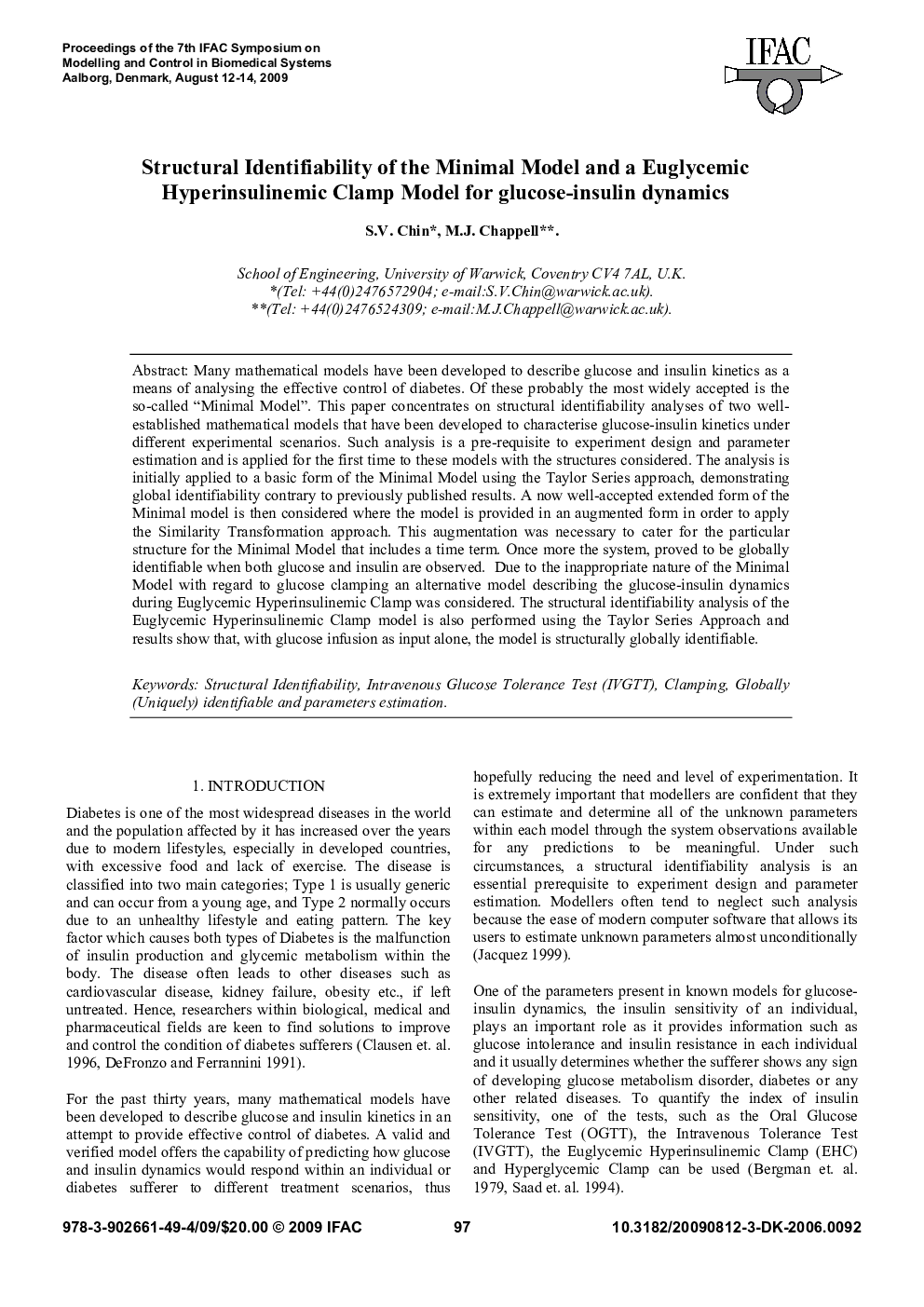| Article ID | Journal | Published Year | Pages | File Type |
|---|---|---|---|---|
| 719442 | IFAC Proceedings Volumes | 2009 | 6 Pages |
Many mathematical models have been developed to describe glucose and insulin kinetics as a means of analysing the effective control of diabetes. Of these probably the most widely accepted is the so-called “Minimal Model”. This paper concentrates on structural identifiability analyses of two well-established mathematical models that have been developed to characterise glucose-insulin kinetics under different experimental scenarios. Such analysis is a pre-requisite to experiment design and parameter estimation and is applied for the first time to these models with the structures considered. The analysis is initially applied to a basic form of the Minimal Model using the Taylor Series approach, demonstrating global identifiability contrary to previously published results. A now well-accepted extended form of the Minimal model is then considered where the model is provided in an augmented form in order to apply the Similarity Transformation approach. This augmentation was necessary to cater for the particular structure for the Minimal Model that includes a time term. Once more the system, proved to be globally identifiable when both glucose and insulin are observed. Due to the inappropriate nature of the Minimal Model with regard to glucose clamping an alternative model describing the glucose-insulin dynamics during Euglycemic Hyperinsulinemic Clamp was considered. The structural identifiability analysis of the Euglycemic Hyperinsulinemic Clamp model is also performed using the Taylor Series Approach and results show that, with glucose infusion as input alone, the model is structurally globally identifiable.
